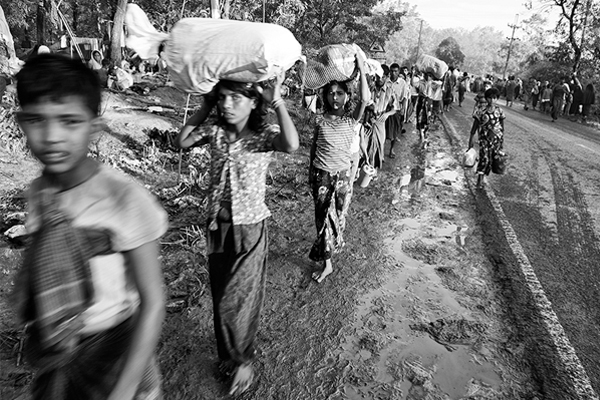
Hundreds of thousands of Rohingya have flooded into southern Bangladesh. The north-south highway between Cox's Bazar and Teknaf was a steady flow of Rohingya refugees in September 2017. Greg Constantine for the US Holocaust Memorial Museum
Burma’s Muslim Rohingya minority has faced severe discrimination and persecution for decades by the Burmese government. In recent years, the Rohingya population has suffered mass atrocities, including crimes against humanity and ethnic cleansing. The Museum's Simon-Skjodt Center for the Prevention of Genocide has expressed concern about the mounting evidence of genocide against the Rohingya.
Two recent waves of brutally violent campaigns by the Burmese military against Rohingya civilians—marked by mass killings, sexual violence, torture, and forced displacement—has resulted in one of the fastest-growing refugee crises of our time. As of late 2017 more than 700,000 Rohingya have fled from Burma to neighboring Bangladesh where they continue to suffer from mental and physical trauma and live in overcrowded camps.
This exhibition showcases the work of photojournalist Greg Constantine, who traveled to the region to bear witness to the deadly conflict in Burma, the humanitarian catastrophe that continues to worsen, and the uncertain future the Rohingya face.
Join the conversation online using #Burma #Rohingya and #USHMM
